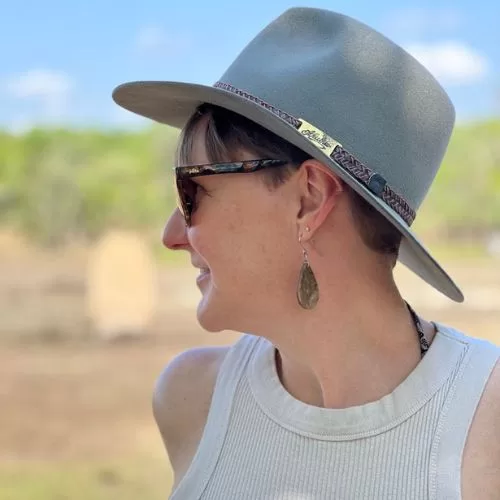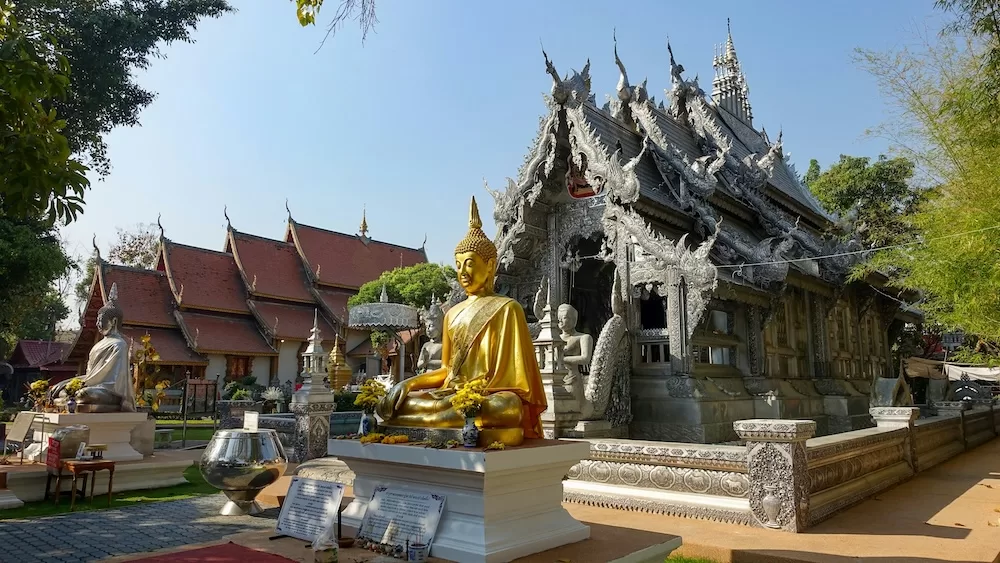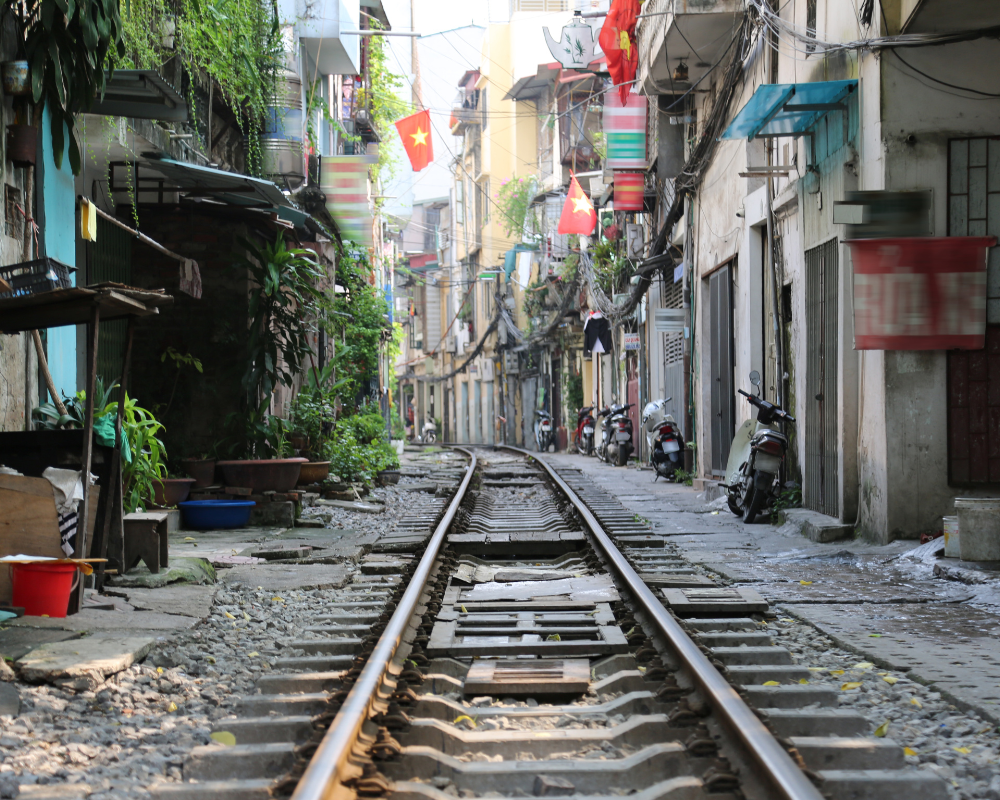
Travelling Southeast Asia 2024: What You Need To Know To Plan the Ultimate Trip.
We have wanted to travel to Southeast Asia, see all it has to offer, dip our toes into the adventure, taste the delicious food on offer and immerse ourselves in the culture and experience what Southeast Asia has to offer. We want to explore off the beaten track and see what gems Southeast Asia has to offer in its simplest and purest form. Ideally, we’d like to stay off the tourist trail, however, we’ll inevitably end up at some of those tourist destinations, they are essentially attractions for a reason.
Southeast Asia has been explored for countless decades, and its well-trodden paths attract most, from the budget travelling backpackers, thrill-seeking adventurers, die-hard food lovers, and travellers seeking unbound luxury, year after year, season after season they keep coming back for more. With its welcoming atmosphere, warm sunny days, vibrant colours, unique flavours, and exotic aromas, this region offers something for everyone.
Everything you need to know before you go.
Travelling through Southeast Asia – Which Southeast Asia Itinerary do you choose?
There are many different routes you can plan when visiting Southeast Asia, and the suggestions and itineraries can be overwhelming! However, what it essentially boils down to is, where do you want to start your journey and where do you want to end your journey. The other question you need to ask yourself is, “How much time do you want to spend in each spot or country?”. This will ultimately affect how many countries you can cover or visit.

For us, slow travel is always our starting point. We like to experience the culture and stay in a place for as long as we can before we move on. This sometimes means that we miss out on seeing everything a country has to offer, but hey, it means we can go back and experience something new next time we visit.
Planning your Southeast Asia route

We have decided that we will be visiting 4 countries in total – Vietnam, Laos, Cambodia and Thailand. Depending on how you want to travel around these countries somewhat dictates where you start. For example, if you want to partake in the thrill-seeking experience of travelling across all countries on a motorbike, then you will need to start your journey in Vietnam. This is because neighbouring countries, Laos and Cambodia, allow vehicles from Vietnam across their borders, however, Vietnam does not allow vehicles from Cambodia or Laos across their borders. If you do decide to do that, you will need to employ a fixer at the borders and even then you are not guaranteed that your motorbike will get across the border.
If you decide to travel in the age-old backpacker way – trains, planes and buses – then your routes are pretty much open to any interpretation. As most countries have bus services or tours that you can use to cross the borders with, you want safety and peace of mind, or you can simply cross on a bus, train or plane independently. Be sure to check if customs officials will want to see proof of onward travel. It might be worthwhile having a cheap bus ticket or train ticket booked for your next destination so that you have proof of onward travel to get you through quickly and efficiently.
When is the best time to visit Southeast Asia?
The best time to visit Southeast Asia is definitely the “What is the weather like in Southeast Asia during …..?” question. Weather affects all travelling decisions, and most travellers do not want to travel across several countries to reach their destination and be cold and wet … unless of course, you have decided to go skiing or experience the monsoon season to see what it’s like!
Ideally, the best time to visit Southeast Asia is between November and February. This is Southeast Asia’s Dry Season. During this time you are almost guaranteed warm days, with temperatures sitting in the high 20C to 30C. The days are less humid, with cooler nights, meaning pack yourself a jumper for when the sun goes down. Dry season means that, generally, most of Southeast Asia is accessible and you are likely going to find pleasant weather no matter where you travel.

The rainy season is between June and October, seeing the Mekong Delta area lush and green, with flourishing rice paddies and a shower or two. Depending on if you don’t mind experiencing some rain, the wet season is a good option for cheaper flights. The rainy season also means that some areas are more affected than others and are not accessible, such as the Mekong Delta and the Andaman Coast in Thailand. The rainy season also welcomes tropical cyclones, so be sure to check this out before you travel.
We have decided to stick with tradition and head across to experience the best time to see Southeast Asia and start our trip at the end of December. Yes, this is the busiest time to travel, and it will be hustling and bustling, but we have made that decision taking this all into consideration.
Transport across Southeast Asia
The best way to travel around Southeast Asia?
Southeast Asia is a mecca for backpackers. You name your Southeast Asian country and someone, somewhere will have an adventurous tale of how they travelled from one location to another! However, due to its popularity and the growing number of tourist visiting each year, transport links are getting better and more customer-friendly. There are many websites that you can use to help you find a route, or transport option, one of these being 12Go. They offer a booking system for trains, buses, and flights across Asia, which you can book ahead on and get free cancellation. They provide you with an electronic ticket on your phone, via their app.
One of the advantages of using travel ticket apps like 12Go, Tour Apps and Booking Services – Get Your Guide and Viator and Ride-Sharing Apps like Grab, Gojel and BE, is that they limit your exposure to scams.
If you do not want to sit in buses or find having to navigate your way around a busy transport system, then you can travel relatively easily across the whole of Southeast Asia on internal flights. It definitely won’t be as cheap as a bus fare, but many backpackers throughout Southeast Asia have commented on how easy it was to book last-minute flights for fares cheaper than $100 per person using 12Go.

Buses and trains offer the cheapest and most accessible option to travel across Southeast Asia with relative ease. There are many overnight trains that offer differing levels of comfort and class, such as the sleeper train that travels up and down Vietnam’s coast, allowing you to travel from Ho Chi Minh to Hanoi with stops all along the way. The train offers different classes of travel, from 2nd Class seat only, 2nd class sleeper – 2nd Class Sleepers are hard beds with six (6) berths per cabin, or 1st class sleeper – 1st Class Sleepers or VIP Sleepers are ‘soft’ beds with four (4) berths per cabin. Tickets range from $63 per person for 2nd class seats to $102 per person for a 1st class sleeper. Alternatively, there is the option to take a sleeper bus. Sticking in Vietnam, a sleeper bus is uniquely designed, catering to travellers seeking both comfort and convenience for their journeys. A sleeper bus allows passengers to rest comfortably, making it a cheaper choice for long-distance travel within the country without wasting precious morning hours.
What visas will you need to visit Southeast Asia?
The majority of visas can be obtained at the border as you travel in Southeast Asia. However, check the embassy before you travel to make sure you do not need to obtain a visa beforehand. It’s always better to be organised and have the most up-to-date travel information for your passport before you travel. If you do decide to obtain visas at borders, make sure you have multiple passport photos, proof of onward travel, even if that’s a cheap bus fare or train ticket that wasn’t expensive and some US dollars. This will ensure that you can get your visa quickly and do not have to worry.
Australian Passport holders
| Country | Visa Type & Duration | Cost | Additional Information |
| Vietnam | E-visa tourist – valid for single entry 30-day. Visa on arrival – single entry 30-day. | US$25 US$25 | Apply for visas months before your travel. Your passport must have at least six months validity remaining from the date of entry and at least two blank visa pages. |
| Laos | Tourist visa – single-entry 30-day visa. | US$ 30 to US$ 45 | Can apply on arrival at border or before hand. Must have: Accommodation booking Passport photos Proof of onward travel Proof of funds |
| Cambodia | E-visa tourist – single-entry 30-day visa. Visa on arrival – single entry 30-day. | US$30 + US$6 processing fee US$30 | Can apply on arrival at border or before hand. Must have: Passport photos Proof of onward travel |
| Thailand | You can travel to Thailand without a visa for up to 30 days. |
United Kingdom Passport holders
| Country | Visa Type & Duration | Cost | Additional Information |
| Vietnam | Visa-free travel for up to 15 days | ||
| Laos | Tourist visa – single-entry 30-day visa | US$30 to US$45 | Can apply on arrival at border or before hand. Must have: Accommodation booking Passport photos Proof of onward travel Proof of funds |
| Cambodia | E-visa tourist – single-entry 30-day visa Visa on arrival – single entry 30-day | US$30 + US$6 processing fee US$30 | Can apply on arrival at border or before hand. Must have: Passport photos Proof of onward travel |
| Thailand | You can travel to Thailand without a visa for up to 30 days. |
United States of America Passport holders
| Country | Visa Type & Duration | Cost | Additional Information |
| Vietnam | E-visa tourist – valid for single entry 30-day Visa on arrival – single entry 30-day | US$25 US$25 | Apply for visas months before your travel. Your passport must have at least six months validity remaining from the date of entry and at least two blank visa pages |
| Laos | Tourist visa single-entry 30-day visa | US$30 to US$45 | Can apply on arrival at border or before hand. Must have: Accommodation booking Passport photos Proof of onward travel Proof of funds |
| Cambodia | E-visa tourist – single-entry 30-day visa Visa on arrival – single entry 30-day | US$30 + US$6 processing fee US$30 | Can apply on arrival at border or before hand. Must have: Passport photos Proof of onward travel |
| Thailand | You can travel to Thailand without a visa for up to 30 days. |
How much does it really cost to travel across Southeast Asia?
Regardless of where you are travelling from, Southeast Asia is a backpacker’s dream to travel with regards to bang for your buck and stretching your pennies. It is often the place where most people start their backpacking journeys and a place that most will come back to time and time again.
Even though the countries have seen an increase in tourism, as a Westerner, you will still find budget-friendly places. Just remember, some Southeast Asian countries are more expensive than others.
Generally, you’ll find that US Dollars are widely accepted, and it’s wise to ensure that you take some with you as almost all countries across Southeast Asia accept US Dollars. ATMs are hard to come by, so make sure you always have cash on hand and do not rely on card payments.
The best way to make sure that your money goes further is to simply slow down. Find yourself a base and stay in one spot for a couple of days. Explore the area, perhaps even finding your own transport, for example, renting a scooter.

For the shoestring backpacking Southeast Asia budget, expect to spend an average of US$35 per day. This budget will have you backpacking across countries whilst staying in hostel dorms, only treating yourself to a beer every so often and really being picky about the tours you want to go on. You might be able to splash out on a beach bungalow or private room every now and again. You’ll be eating street food, making sure you have bought snacks and making your lunch from supermarket shops. Travel will generally be on low-cost buses, perhaps an overnight train here or there but definitely no flights.
For those that can splash a little more cash, the “live large” backpacking Southeast Asia budget is roughly US$60 per day. This budget will have you still staying in hostel dorms, but you could stay in a basic room. You wouldn’t be able to splash the cash at resorts or upmarket hotels, but you can still treat yourself to a nice private room if you please. If you stick to street food and affordable restaurants, you won’t have to worry about entering a supermarket or making your own food. The bonus, as any backpacker travelling Southeast Asia seeks, is you’ll be able to join in some parties and partake in a few more beers if you so wish to. Additionally, you’ll be able to afford to find a few more tours on those key sights you want to see or those adventures you want to be a part of. However, you will still, predominantly be travelling overland on a train or bus. There might be room for the odd flight, but those won’t be your main source of travel from one place to another.
For amazing tailored Southeast Asian tours or Southeast Asian adventures book here.
How Safe is Southeast Asia to Travel?
Home to well-worn travel trails, and one of the most popular places to visit in the world, Southeast Asia is a hub of activity, and adventure attracts travellers from all across the world.
Despite this, people still ask … How safe is it to travel across Southeast Asia?

Tens of millions of people travel to Southeast Asia every year, and the likelihood of you experiencing any significant danger here is unlikely. In fact, Southeast Asia is ranked safer than the United States of America! However, is Southeast Asia safe to travel or safety tips for Southeast Asia are questions that are often asked, especially by solo travellers.
Southeast Asia is a backpacking and travel hub, where people go, and so do opportunists … no matter where you travel in the world, you should always follow basic travel safety advice. Nevertheless, you’re mostly going to encounter friendly, helpful locals and it’s doubtful that you will experience any trouble.
General Safety Tips For Travelling Southeast Asia
Make sure you are aware of the culture, customs, and laws of the countries you plan to visit. Respecting the cultural norms is important and can be as simple as familiarising yourself with local etiquette and blending in with the local population. This is the foundation for all subsequent travel safety advice. This also encompasses being a responsible traveller. Responsible travellers are people who are aware and respectful of customs and norms, who seek permission when photographing people or property, who respect the environment, and who have a low travel footprint.
Pickpocketing and Purse-snatching
The best way to avoid the most common types of theft is to not wear your purse or bag over just one shoulder. Instead, wear it across the front of your body, or even better wear a specific anti-theft travel bag that sits close to your body and can be worn under clothes or across the front of your body. Additionally, something to keep in the back of your mind as you travel or walk around, many purse-snatchers are on scooters, so take particular caution when walking alongside traffic.

Traffic, Traffic Everywhere!

Be careful when walking around in high-traffic areas. Most injuries in Southeast Asia are caused by vehicles. Be especially careful if you are going to travel by scooter. Make sure you wear a helmet, proper clothing and shoes. But most importantly, you have travel insurance that will cover you for any accidents caused by vehicles.
It’s likely at some point that you will get in a taxi to travel somewhere on your journey. This might be to your accommodation, a local attraction or even to another town or city. Generally, local taxis are safe, however, there are a few scams that happen and that you should be aware of before you step inside a taxi.
Depending on where you are in Southeast Asia, a better option is to use Grab or Uber. You’ll be able to see your driver, track your ride, and make complaints if you have a problem. It’s the best way to get around in Southeast Asia, when available.
Is the food safe in Southeast Asia?
A less-obvious threat to anybody’s holiday is things such as fevers, bad stomachs and severe sunburn. These often ruin more trips to Southeast Asia than pickpocketing, traffic or scams.
One of the best ways to experience the local culture in Southeast Asia is through street food which is a great way to experience the cuisine and feast on the cheap. Southeast Asia offers an abundance of exotic, and often spicy food, that can be a shock to unsuspecting Western stomachs. While not a show-stopper, no one wants to spend unnecessary time in squat toilets. There is always a risk of eating something that upsets your stomach, however, eating at street food stalls is perfectly safe if you follow a few must-know tips.
Generally speaking, you can’t drink tap water in Southeast Asia. As tap water in the majority of countries isn’t safe to drink, you might want to consider investing in a filtered water bottle. However, these can be an outlay that you might not want to invest in, but they are well worth the investment and will make tap water safe to drink. This then can save you money on single-use bottles and stop you from getting ill! Additionally, if the water where you are is not potable, then it is advisable to avoid getting ice in your drinks or ordering a salad, as more often than not this is washed in tap water.

Get your filtered water bottle from here
Should any of this stop you from travelling to Southeast Asia? Of course not! As long as you follow these basic travel safety tips your trip is unlikely to have anything happen. Wherever you go in the world you will always be faced with safety concerns. However, if you follow our top tip of making sure you obtain travel insurance before you go, we never leave on a trip without travel insurance and neither should you!
Essential Travel Toolkit
🚖 Rideshare Apps – The most complete guide to Rideshare, Ride-hailing and taxis in Southeast Asia.
🚞 12Go.com – The easiest way to book transport, public or private in Southeast Asia, Japan and Beyond.
🏨 Trip.com – Consistently great accommodation and hotel deals.
🛩️ Trip.com – Get the best flight deals.
🚙 Trip.com – Find your perfect rental car.
🗺️ Getyourguide.com – Looking for an amazing local guide or tour. Get Your Guide will have something for everyone.
🗺️ Viator.com – Easily book tours and experiences at the lowest rate. Amazing options all over the world.
👨💻 NordVPN.com – Reliable VPN service that is guaranteed to keep you and your data safe anywhere in the world.

Wendy is a traveller, writer, and photographer with an insatiable curiosity for the world. Her journey, spanning South Africa, the UK, and now Australia, infuses her work with a rich tapestry of experiences. Join her on Getting Lost Again as she shares her creative perspective and passion for overland travel alongside Dan.


